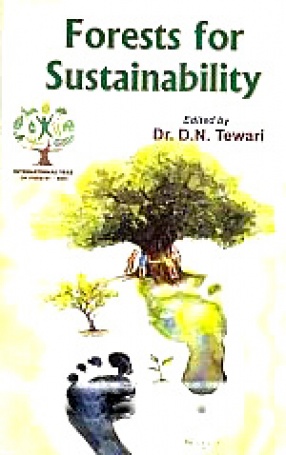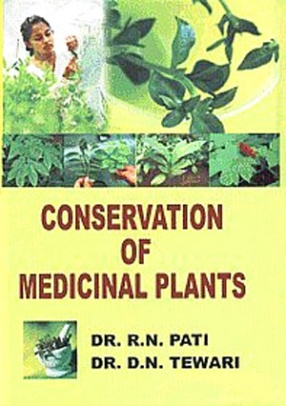
D N Tewari

Showing all 14 books












The environment on which we all depend is under threat from growing levels of greenhouse gas emissions, biodiversity loss and acidifying oceans. Environmental threats such as climate change, land degradation, deforestation, biodiversity loss, air and water pollution and natural disasters affect everyone, but they hurt poor countries and poor communities most. We have an obligation to protect our planet for the sake of future generations and to safeguard ...



This volume comprises of research articles presented at first Global Summit of Sustainable Development and Biodiversity, Gloss-2008 during February 7-9, 2009. This volume critically examines various complex issues relating to erosion of habitats medicinal and aromatic plants (MAPs) around the globe. Poor people in hill and mountain regions of South Asia and Africa not only resort to participatory conservation of medicinal plant biodiversity but also draw more ...

The role of plants as a source of diverse food, fodder, fuelwood, medicines, constructional material and wide range of other products is well-known since time immemorial. Plants are integral to human existence and linked with our lives, providing a largesse for our primal useful and emotional needs. Plants with colourful flowers, useful fruits and soothing foliage reveal the physical and metaphysical meaning of nature and life. In fact, the flowering plants ...

Neem (Azadirachta indica A. Juss.) tree is an attractive evergreen (deciduous in drier areas) native to the Indian subcontinent, but cultivated throughout South-east Asia, Australia, East and Sub-Sahelian Africa, Fiji, Mauritius, many countries in Central and South America, the Caribbean, Puerto Rico, and the Virgin Islands. There are host of products obtained from the neem tree, many of which are of potential use in pest management programmes hence, it has ...

Teak (Tectona grandis Linn.f.) is a unique species whose timber is most aristocrat amongst the timbers of India. It is one of the most durable timbers in the world and used for all conceivable purposes. In view of its immense importance in the national economy, and by reason of its high price and value, even a slight improvement in the quantity and quality of production will have significant effect. For this there is a need of a detailed comprehensive compilation ...

This book depicts the world's desert ecosystems and describes in depth the Indian desert, its resources, different production systems including forestry, agroforestry, agriculture, horticulture, animal husbandry, mining, industries, etc. It also deals with the efforts made in alleviating hunger and poverty and bringing greenery and grainary to desert inhabitants through large scale afforestation, technological-advances in sustainable development of resources, ...

The Himalayan region is a vast complex of various eco-systems spread over an area of 423021 sq km. With an extensive and pervasive influence on the living of half a billion disadvantaged population of these uplands, the need of preserving, the eco-system of this 'Third Pole' has been long recognised by one and all through an societally acceptable approach. For this purpose many views and reviews were put forth by various emminent environmental conservationists ...

The Western Ghats hill ranges stretch to about 1600 km, starting from the mouth of river Tapti in Dhule district of Maharashtra and ending at Kanyakumari, the southernmost tip of India in Tamil Nadu. The region covers an area of 1,60,000 sq km, supporting a population of more than 50 million people. Western Ghats are an important source of water, energy and biological diversity. The region is also rich in iron, manganese, and bauxite ores. About 30 per cent area ...


The essential goods and services on the planet depend on the variety and variability of genes, populations and ecosystems. Society will continue to need the services and products derived from the forests. As natural stands of trees are lost greater efforts to conserve those remaining will continue. There will be more need to select and develop trees and forests that are managed for production purposes to reduce pressure on the remaining natural forests to provide ...

The present trend of depletion of forest cover and population explosion is leading towards natural catastrophy in near future. Nowadays the concept of agro-forestry is trying to fill the gap to cater the needs of local people by multiple use of natural resources such as soil, radiant energy, water and nutrient. Due to population pressure, excessive use of agricultural field through heavy fertilizer and faulty irrigation practices is leading towards the formation ...

Wood is a common place product. Though it is renewable resource, yet the uses being many, the requirement is enormous and is ever increasing. The generation, absorption and innovation in wood production and utilization technology to achieve perpetual returns in short rotation is much needed. Among fast growing multipurpose wood species Eucalyptus species have gained importance over the others for their high adaptibility, coppicing behaviour, etc. and wide range ...
